
Find Help
More Items From Ergsy search
-

Carpal Tunnel Syndrome
Relevance: 100%
-

What causes Carpal Tunnel Syndrome?
Relevance: 95%
-

Is Carpal Tunnel Syndrome covered by the NHS?
Relevance: 94%
-

How is Carpal Tunnel Syndrome diagnosed?
Relevance: 93%
-

What is Carpal Tunnel Syndrome (CTS)?
Relevance: 92%
-

How can I prevent Carpal Tunnel Syndrome?
Relevance: 90%
-

Are there any alternative treatments for Carpal Tunnel Syndrome?
Relevance: 87%
-
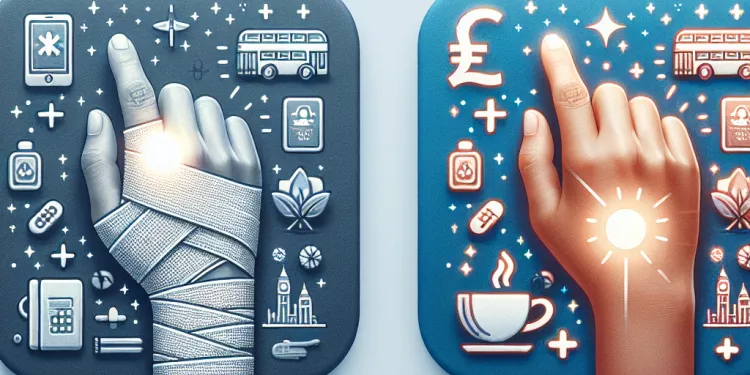
Can Carpal Tunnel Syndrome recur after treatment?
Relevance: 86%
-
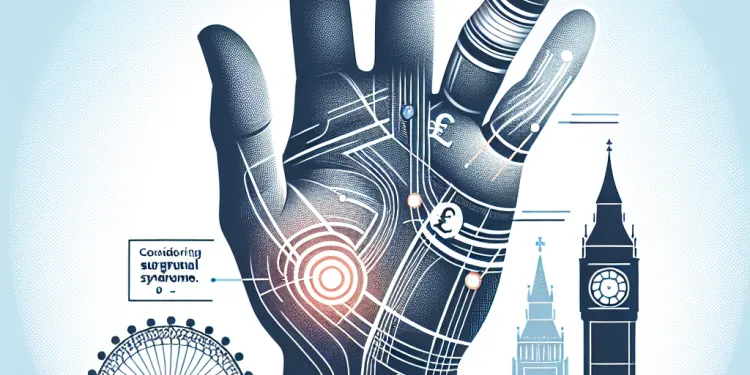
When should I consider surgery for Carpal Tunnel Syndrome?
Relevance: 86%
-

Are there specific exercises that can help with Carpal Tunnel Syndrome?
Relevance: 86%
-

What does Carpal Tunnel Syndrome surgery involve?
Relevance: 85%
-

What non-surgical treatments are available for Carpal Tunnel Syndrome?
Relevance: 84%
-

What are the common symptoms of Carpal Tunnel Syndrome?
Relevance: 79%
-

Can lifestyle changes help manage Carpal Tunnel Syndrome?
Relevance: 77%
-
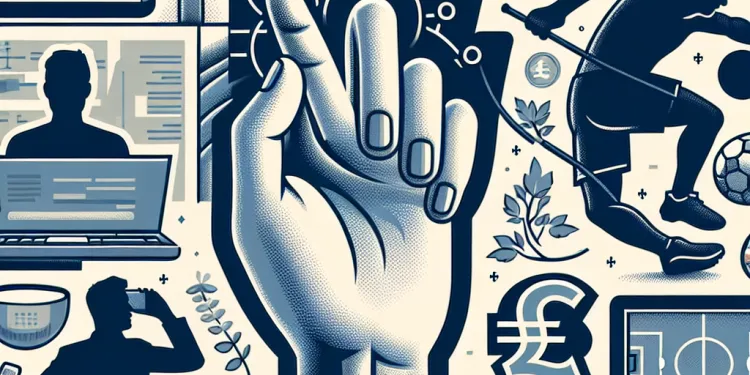
Can I work or continue sports activities if I have Carpal Tunnel Syndrome?
Relevance: 77%
-

What is the recovery time after Carpal Tunnel Surgery?
Relevance: 64%
-

What is Cushing's syndrome?
Relevance: 26%
-

Munchausen's syndrome | NHS
Relevance: 25%
-

Prader-Willi Syndrome | NHS
Relevance: 25%
-

Is chronic fatigue syndrome contagious?
Relevance: 24%
-

Turner syndrome: Beyond the classic XO phenotype
Relevance: 24%
-

Having a child with Down's syndrome | NHS
Relevance: 24%
-

Down's syndrome: Emily's story | NHS
Relevance: 23%
-
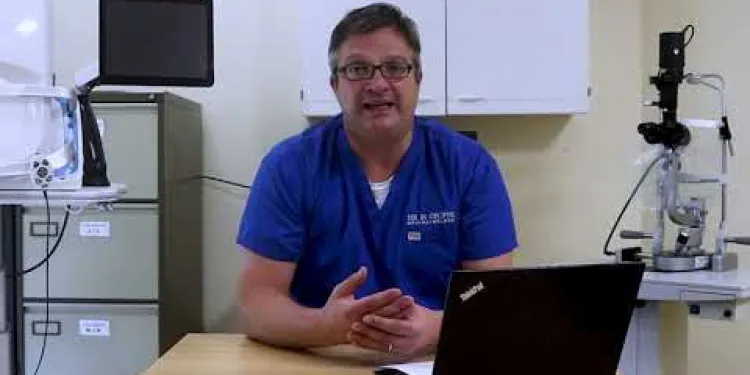
Charles Bonnet Syndrome
Relevance: 23%
-

What causes chronic fatigue syndrome?
Relevance: 23%
-
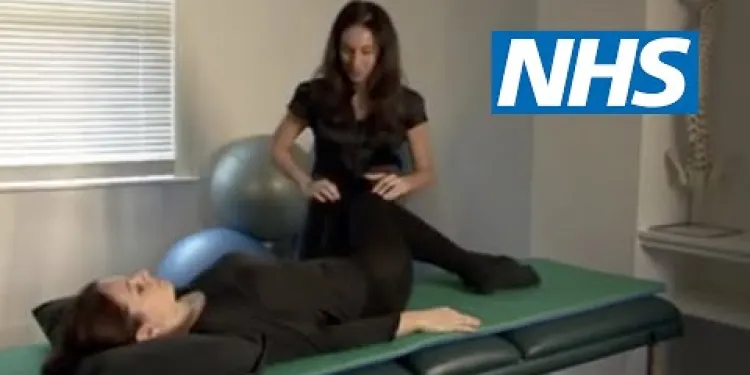
Exercises for sciatica: piriformis syndrome | NHS
Relevance: 23%
-

What is complex sleep apnea syndrome?
Relevance: 23%
-

What is complex sleep apnea syndrome?
Relevance: 23%
-

What is chronic fatigue syndrome?
Relevance: 22%
-

What is congenital rubella syndrome?
Relevance: 22%
-

Having a child with Edwards' syndrome (trisomy 18) | NHS
Relevance: 22%
-

What is the difference between autism and Asperger's syndrome?
Relevance: 22%
-

Are there psychological aspects to chronic fatigue syndrome?
Relevance: 21%
-

Is chronic fatigue syndrome a mental illness?
Relevance: 21%
-

Greater trochanteric pain syndrome
Relevance: 21%
-

Building Understanding and Supporting Your Child with Tourette’s Syndrome/Tics
Relevance: 21%
-

What role do infections play in chronic fatigue syndrome?
Relevance: 21%
-

Can baby sleep pillows prevent flat head syndrome?
Relevance: 20%
-

Who is at risk of developing chronic fatigue syndrome?
Relevance: 20%
-

What is irritable bowel syndrome (IBS)?
Relevance: 20%
What is Carpal Tunnel Syndrome (CTS)?
Carpal Tunnel Syndrome (CTS) is a common condition that affects the hand and arm, causing pain, numbness, and tingling sensations. It occurs when the median nerve, which runs from the forearm into the palm of the hand, becomes compressed at the wrist.
Anatomy of the Carpal Tunnel
The carpal tunnel is a narrow passageway located on the palm side of the wrist. It is surrounded by bones and ligaments. This tunnel protects the median nerve and the tendons that bend the fingers. When pressure builds within this confined space, it can lead to Carpal Tunnel Syndrome.
Causes of Carpal Tunnel Syndrome
CTS can develop due to various reasons. Repetitive hand movements, especially those involving forceful or awkward positions, can contribute to the condition. Other factors include wrist injuries, rheumatoid arthritis, and fluid retention during pregnancy. Additionally, certain health conditions such as diabetes and obesity are associated with a higher risk of developing CTS.
Symptoms of Carpal Tunnel Syndrome
Symptoms usually start gradually and include a tingling or numbness in the fingers or hand, especially in the thumb, index, and middle fingers. This sensation can extend from the wrist and often occur during the night or upon waking up. Some people may experience weakness in the hand and struggle to hold objects.
Diagnosing Carpal Tunnel Syndrome
Diagnosis is based on the symptoms and may include a physical examination of the hand. Doctors might perform specific tests to assess the functionality of the median nerve. In some cases, an electromyography or a nerve conduction study may be recommended to measure the electrical activity in the muscles and how well the median nerve is functioning.
Treatment Options for Carpal Tunnel Syndrome
Treatment aims to relieve pressure on the median nerve. Depending on the severity, different approaches may be taken. Initial measures often involve modifying activities that worsen symptoms. Wearing a wrist splint at night can help. Non-steroidal anti-inflammatory drugs (NSAIDs) may be prescribed to reduce inflammation.
For persistent cases, corticosteroid injections can be administered to reduce swelling. In severe cases, surgery may be required to release the pressure on the median nerve by cutting the ligament pressing on it.
Preventing Carpal Tunnel Syndrome
Prevention involves adopting ergonomic improvements in the workplace or home, such as ensuring a proper wrist position when using computers or other equipment. Taking regular breaks from repetitive tasks and performing stretching exercises can help reduce the risk. Maintaining a healthy lifestyle and managing underlying health conditions are also essential components in preventing CTS.
What is Carpal Tunnel Syndrome (CTS)?
Carpal Tunnel Syndrome (CTS) is a problem that can make your hand and arm hurt. It might also make them feel numb or tingly. This happens because there is a nerve in your wrist that is being squeezed too much.
Anatomy of the Carpal Tunnel
The carpal tunnel is a small space in your wrist. It is on the palm side of your hand. This space has bones and bands around it. The tunnel keeps the nerve and bands that help your fingers move safe. If there is too much pressure in this space, it can cause Carpal Tunnel Syndrome.
Causes of Carpal Tunnel Syndrome
Carpal Tunnel Syndrome can happen for different reasons. Doing the same hand movements a lot, especially if they are hard or awkward, can cause it. Other reasons include wrist injuries, arthritis, and when your body holds too much water, like when you are pregnant. Some health problems like diabetes and being overweight can also make it more likely to happen.
Symptoms of Carpal Tunnel Syndrome
Signs of Carpal Tunnel Syndrome start slowly. You might feel tingling or numbness in your fingers or hand. This mostly happens in your thumb, index, and middle fingers. The feeling could move from your wrist and often happens at night or in the morning. You might also find it hard to hold things.
Diagnosing Carpal Tunnel Syndrome
To find out if someone has Carpal Tunnel Syndrome, doctors look at the symptoms and may check your hand. They might do special tests to see how well the nerve is working. Sometimes, they use machines to check the nerve and muscles.
Treatment Options for Carpal Tunnel Syndrome
To make Carpal Tunnel Syndrome better, doctors try to ease the squeezing on the nerve. You may need to change what you are doing if it makes the pain worse. Wearing a wrist brace at night can help. Sometimes, medicines can help reduce swelling.
If it doesn't get better, doctors might give an injection to reduce swelling. In serious cases, surgery might be needed to stop the squeezing on the nerve.
Preventing Carpal Tunnel Syndrome
You can help stop Carpal Tunnel Syndrome by making sure your wrist is in a good position when using computers or doing other tasks. Take breaks and do stretches. Living a healthy life and taking care of other health problems can also help prevent it.
Frequently Asked Questions
What is Carpal Tunnel Syndrome (CTS)?
Carpal Tunnel Syndrome (CTS) is a condition that occurs when the median nerve, which runs from the forearm into the palm of the hand, is compressed at the wrist, leading to pain, numbness, and weakness in the hand and arm.
What are the symptoms of Carpal Tunnel Syndrome?
Symptoms of Carpal Tunnel Syndrome include tingling, numbness, and pain in the thumb, index, middle, and ring fingers, weakness in the hand, and a tendency to drop objects.
What causes Carpal Tunnel Syndrome?
Carpal Tunnel Syndrome is caused by pressure on the median nerve at the wrist, which may be due to repetitive hand movements, wrist anatomy, conditions like arthritis, diabetes, or thyroid dysfunction, or pregnancy.
How is Carpal Tunnel Syndrome diagnosed?
CTS is diagnosed through a physical examination, review of symptoms, and sometimes nerve conduction studies or electromyography to measure the electrical activity in muscles and nerves.
Who is at risk for developing Carpal Tunnel Syndrome?
People who perform repetitive motions with their hands, such as typing or assembly line work, pregnant women, and those with certain medical conditions are at higher risk for developing CTS.
How is Carpal Tunnel Syndrome treated?
Treatment for CTS can include wrist splinting, anti-inflammatory medications, corticosteroid injections, physical therapy, or surgery in severe cases to relieve pressure on the median nerve.
Can Carpal Tunnel Syndrome be prevented?
While it may not always be preventable, reducing repetitive strain on the wrist, taking breaks, maintaining good posture, and keeping wrists in a neutral position can help lower the risk of CTS.
What workplace modifications can help with Carpal Tunnel Syndrome?
Ergonomic adjustments such as adjusting the height of chairs and desks, using ergonomic keyboards and mice, and taking regular breaks can help reduce the strain on wrists and prevent CTS.
How effective is surgery for Carpal Tunnel Syndrome?
Surgery, known as carpal tunnel release, is often successful in relieving symptoms of CTS and typically involves cutting the ligament to reduce pressure on the median nerve, with many patients experiencing significant improvement.
How long does recovery from Carpal Tunnel Syndrome surgery take?
Recovery from carpal tunnel release surgery usually takes several weeks to months, with many patients returning to normal activities in about 4 to 6 weeks, although full recovery can take longer.
Is Carpal Tunnel Syndrome permanent?
CTS symptoms can be alleviated with proper treatment and management, but if left untreated, it can lead to permanent nerve damage and muscle weakness.
Can Carpal Tunnel Syndrome affect both hands?
Yes, CTS can affect one or both hands, although symptoms are often more severe in the dominant hand.
Are there alternative therapies for Carpal Tunnel Syndrome?
Some people find relief from CTS symptoms through alternative therapies such as yoga, acupuncture, or chiropractic care, although more research is needed to confirm their effectiveness.
What is the role of physical therapy in treating Carpal Tunnel Syndrome?
Physical therapy can help by teaching exercises to stretch and strengthen the wrist and hand, improving range of motion, and reducing symptoms of CTS.
How does wrist splinting help with Carpal Tunnel Syndrome?
Wrist splinting helps by keeping the wrist in a neutral position, reducing pressure on the median nerve, and is often recommended, especially during sleep, to alleviate nocturnal symptoms.
Can lifestyle changes impact Carpal Tunnel Syndrome symptoms?
Yes, maintaining a healthy weight, managing chronic health conditions, and avoiding activities that exacerbate symptoms can help manage and reduce the risk of CTS.
How does Carpal Tunnel Syndrome affect daily life?
CTS can make daily tasks such as typing, writing, or gripping objects difficult due to pain, numbness, and weakness, impacting job performance and quality of life.
What are the complications associated with untreated Carpal Tunnel Syndrome?
If left untreated, CTS can lead to chronic pain, persistent numbness, irreversible nerve damage, and loss of hand function.
What are the non-surgical treatments for Carpal Tunnel Syndrome?
Non-surgical treatments include wrist splinting, ergonomic changes, medications, corticosteroid injections, and physical therapy to manage symptoms and improve function.
How can technology use be adapted to reduce the risk of Carpal Tunnel Syndrome?
Using voice recognition software, ergonomic keyboards, and mice, and ensuring proper workstation setup can help reduce the risk of CTS associated with technology use.
What is Carpal Tunnel Syndrome?
Carpal Tunnel Syndrome (CTS) is when you feel pain in your wrist and hand. The pain happens because a nerve in your wrist gets squeezed.
Here are some ways to help with CTS:
- Rest your hands often.
- Try wearing a wrist brace.
- Use special tools that are easier on your hands.
- Ask a doctor for help.
Carpal Tunnel Syndrome (CTS) happens when something presses on a nerve in your wrist. This nerve goes from your arm to your hand and helps you feel and move your fingers. When it gets pressed, your hand and arm might hurt, feel numb, or get weak.
If you find it hard to read, you can try listening to the text instead. Using an app that reads text aloud can be helpful. You can also take breaks and read a little bit at a time.
What happens if you have Carpal Tunnel Syndrome?
Carpal Tunnel Syndrome can make your hand and wrist feel different. Here’s what might happen:
- Your hand or fingers feel tingly, like pins and needles.
- Your fingers might feel numb.
- Your thumb, index, and middle fingers could feel weak.
- You might drop things because your grip is weaker.
- Your wrist or hand may hurt, especially at night.
If you think you have these feelings, tell an adult or a doctor. They can help you feel better.
Try using computer tools to make typing easier. Follow exercises to relax your hands.
Carpal Tunnel Syndrome can make your hand and fingers feel strange.
You might feel tingling, like tiny pins are poking you, or numbness, where it's hard to feel anything.
Your thumb and fingers might hurt, too. This includes your first four fingers: the thumb, index (pointer), middle, and ring fingers.
Your hand might feel weak and you might drop things by accident.
If reading is hard, try using a text-to-speech tool that reads text aloud. Listening to information can make it easier to understand.
What makes Carpal Tunnel Syndrome happen?
Carpal Tunnel Syndrome can make your hand and wrist hurt. It is caused by pressure on a nerve in your wrist called the median nerve.
Here are some things that might cause it:
- Doing the same hand movements over and over, like typing a lot.
- Wrist injury or swelling.
- Some health problems, like diabetes or arthritis.
Using special wrist rests or taking breaks when doing tasks can help prevent it. If your wrist hurts a lot, it's good to see a doctor.
Carpal Tunnel Syndrome happens when there is pressure on a nerve in your wrist. This nerve is called the median nerve.
This pressure can happen because:
- You move your hand in the same way over and over.
- Your wrist is shaped a certain way.
- You have health problems like arthritis or diabetes.
- You are pregnant.
Drawing pictures or using apps with sounds can help you understand this better.
How Do Doctors Find Out If You Have Carpal Tunnel?
Doctors use tests to see if you have Carpal Tunnel. They might ask you to move your hand and wrist. Sometimes they tap or press on your wrist. If it tingles or hurts, it helps them understand.
Doctors may also do a test that checks how fast signals travel in your nerves. This tells them how well your nerves are working. They might use a computer or special machines to do this.
If you or someone helping you needs support, tools like diagrams or videos can show what happens in the tests. These can make it easier to understand. There are apps and websites that can read the text out loud to you, too.
Doctors find out if you have CTS by checking your body, asking about your symptoms, and sometimes doing special tests to see how your muscles and nerves are working.
Who can get Carpal Tunnel Syndrome?
Some people have a higher chance of getting Carpal Tunnel Syndrome. Here are some groups that should be careful:
- People who use their hands a lot, like typing or playing an instrument.
- People who do the same hand movements over and over again.
- People with health problems like diabetes or arthritis.
- Pregnant women.
If you think you might get Carpal Tunnel Syndrome, talk to a doctor. They can help. You can also do hand exercises and take breaks to rest your hands.
People who do the same hand movements a lot, like typing or working on an assembly line, might get a problem called CTS. Pregnant women and people with some illnesses can also get CTS more easily.
How can we make Carpal Tunnel Syndrome better?
Carpal Tunnel Syndrome can make your hand and wrist hurt. Here are some simple ways to help:
- Rest your hand: Try not to use your wrist too much.
- Wear a wrist brace: A wrist brace can keep your hand in a good position.
- Ice packs: Put an ice pack on your wrist to help with swelling.
- Hand exercises: Gentle exercises can make your hand feel better.
- Medicine: Doctors might give you medicine to help with pain.
If it still hurts, ask a doctor for help. They know what to do.
For extra help, you can:
- Use audiobooks to listen and learn about it.
- Ask someone you trust to read with you.
- Watch videos about Carpal Tunnel Syndrome.
There are ways to help if you have CTS (Carpal Tunnel Syndrome).
You can wear a wrist splint to keep your wrist straight. This can help a lot.
Sometimes, taking medicine that reduces swelling can make your wrist feel better. These are called anti-inflammatory medicines.
Doctors might also give you an injection. This is a special medicine shot to help with swelling and pain. It's called a corticosteroid injection.
Doing special exercises with a therapist can make your wrist stronger and less painful. This is called physical therapy.
If nothing else helps and the pain is really bad, a doctor might suggest a small operation. This surgery helps take pressure off the nerve in your wrist, which can stop the pain.
If you need help understanding or remembering this, you can ask someone to read it with you, or you can use a voice reading tool.
How can you stop Carpal Tunnel Syndrome?
Carpal Tunnel Syndrome can happen when you use your hands a lot. Here are some easy ways to help prevent it:
- Take breaks when doing tasks with your hands.
- Keep your wrists straight and don't bend them too much.
- Stretch your hands and wrists gently.
- Use tools or gadgets that help make it easier on your hands.
- Try using special keyboards or mouse pads.
If you need more help, ask a doctor or a therapist.
Sometimes, you can't stop wrist pain. But you can try to help your wrists feel better. You can:
- Don't do the same thing over and over with your wrist.
- Take breaks.
- Sit or stand up straight.
- Keep your wrist straight.
These tips can help you get less wrist pain.
How can we change the workplace to help with Carpal Tunnel Syndrome?
Carpal Tunnel Syndrome can make your hands hurt. Here are some simple changes that can help:
- Use a soft pad for your wrists when typing.
- Take short breaks often to rest your hands.
- Try a special keyboard and mouse designed for comfort.
- Make sure your chair and desk fit you well.
Ask for help if you need it. You can also use voice-to-text tools to avoid typing too much.
Making changes to your workspace can help your wrists feel better. Here are some things you can do:
- Change how high your chair and desk are.
- Use special keyboards and mice that are easier on your hands.
- Take breaks often to rest your wrists.
Does surgery help with Carpal Tunnel Syndrome?
Surgery for carpal tunnel syndrome (CTS) can help many people feel better. This surgery is called carpal tunnel release. The doctor cuts a ligament in your wrist. This helps take the pressure off the median nerve, which can make your symptoms go away or get much better.
How long does it take to feel better after Carpal Tunnel surgery?
Carpal Tunnel surgery helps fix a problem in your hand. After surgery, your hand needs time to heal. This can take a few weeks to a few months.
Everyone heals differently. Some people might feel better in a few weeks. Others might need more time. Your doctor will tell you how long it might take for you.
Using easy tools can help you feel better. A splint or a wrist brace can keep your hand safe. Doing hand exercises can make your hand strong again. Your doctor or therapist can show you the right exercises.
After surgery to help fix carpal tunnel, it can take a few weeks or a few months to feel better. Most people can start doing their normal things again in around 4 to 6 weeks, but feeling all the way better can take more time.
Does Carpal Tunnel Syndrome last forever?
CTS means Carpal Tunnel Syndrome. It's when your wrist and hand hurt and feel tingly.
You can make CTS feel better with good care and treatment. But if you don't take care of it, it can hurt your hand and wrist forever. This might make your hand weak.
Here are some things that can help:
- Wear a special wrist brace to keep your wrist straight.
- Rest your hand often and don't use it too much.
- Do easy hand exercises. Ask someone to help you learn them.
- If it hurts a lot, talk to a doctor. They can give you more help.
Can Carpal Tunnel Syndrome hurt both hands?
Yes, Carpal Tunnel Syndrome can hurt both hands. It might make your hands feel tingly, numb, or weak. If you feel this way in both hands, you should talk to a doctor.
You can try these things to help:
- Take breaks from using your hands too much.
- Stretch your hands and wrists gently.
- Wear a special wrist brace to keep your hand straight.
If it keeps hurting, tell a grown-up and see a doctor.
Yes, CTS can hurt one or both hands. It usually hurts more in the hand you use the most.
If you find it hard to read, try using a tool that reads the text out loud. Take your time and read slowly.
Are there other ways to help Carpal Tunnel Syndrome?
Carpal Tunnel Syndrome is a condition that makes your hand hurt or feel numb. There are different ways to help feel better.
Try these things:
- Stretch your hand and wrist.
- Rest your hand often.
- Put a cold pack or ice on your wrist.
- Wear a special wrist brace to keep your hand straight.
Talking to a doctor or therapist can also help. They can show you exercises or help find a good wrist brace.
Some people feel better from CTS by trying things like yoga, acupuncture, or seeing a chiropractor. We need to learn more to know how well these work.
How can physical therapy help with Carpal Tunnel Syndrome?
Physical therapy helps your hand and wrist feel better.
A therapist shows you exercises. These exercises make your wrist and hand stronger.
The therapist can also teach you how to move your hand to hurt less.
Using a wrist splint can support your wrist and help it heal.
Regular breaks from what you are doing can help stop pain.
If you need help, ask someone to show you how to do the exercises.
Using videos and pictures can also help you understand better.
Physical therapy can help. You can learn exercises to make your wrist and hand stronger and more flexible. This can help with feeling better and moving your hand more easily.
How Does a Wrist Splint Help with Carpal Tunnel Syndrome?
A wrist splint is a special band that you wear on your wrist.
Wearing a wrist splint can help keep your wrist straight.
This is good because it gives your wrist a rest and can help stop pain.
If your hand hurts, wearing the splint at night can make it feel better.
Ask a doctor or a nurse if you want help with a wrist splint.
Wearing a wrist brace can help your hand feel better. It keeps your wrist straight, so it does not hurt as much. Doctors often suggest wearing it at night when you sleep to stop the pain from waking you up.
Can changing how I live help with Carpal Tunnel Syndrome?
Yes, staying at a healthy weight can help. Taking care of your health and not doing things that make the pain worse also helps. These things can lower the risk of CTS.
How does Carpal Tunnel Syndrome affect daily life?
Carpal Tunnel Syndrome can make your hand feel weak or numb. This might make it hard to do things like write, hold a fork, or use a computer. If you have trouble using your hand, try taking breaks or doing hand exercises. You can also ask someone for help if you need it.
CTS can make everyday things hard. Things like typing, writing, or holding things can hurt or feel numb and weak. This can make it hard to do your job well and enjoy life.
You can use special tools to help. A wrist brace can give support. Taking breaks often when using your hands can also help.
What problems can happen if Carpal Tunnel Syndrome is not treated?
If Carpal Tunnel Syndrome is not treated, it can cause more problems. Here are some of the things that might happen:
- Your hands might feel weak.
- You may drop things easily.
- You could have tingling or numbness in your fingers.
- Pain in your hand or wrist could get worse.
- The muscles in your hand might get smaller.
It is important to talk to a doctor if you have these symptoms.
Here are some things that might help:
- Wearing a wrist brace.
- Doing hand exercises.
- Taking breaks from repetitive tasks.
- Using a special keyboard or mouse.
These steps can help your hands feel better.
If you do not get help for CTS, it can cause big problems. It can make your hand hurt a lot, feel tingly all the time, and not work right. You might even hurt your nerves forever.
Here are some things that can help:
- See a doctor if your hand hurts or feels funny.
- Try using a special glove or brace to support your hand.
- Do gentle hand exercises to make it feel better.
What are the ways to help Carpal Tunnel Syndrome without surgery?
If your hand and wrist hurt because of Carpal Tunnel Syndrome, there are ways to help without surgery:
- Rest your hand: Try not to use your hand too much. Take breaks.
- Use a splint: Wear a special brace on your wrist. It helps keep your wrist straight.
- Change hand movements: Use your hand in a different way. This can make it hurt less.
- Stretching exercises: Gently stretch your hand and fingers. This can help.
- Ice packs: Put a cold pack on your wrist. It can reduce swelling and pain.
- Therapy: Sometimes, visiting a therapist can help you learn more exercises.
- Medicine: You can take medicine to help with pain and swelling. Ask a grown-up or a doctor first.
If you find it hard to understand things, you can:
- Ask someone to read this with you.
- Use pictures to help understand.
- Ask questions if you are unsure.
If your wrist hurts, there are things you can try that do not involve surgery. You can wear a special wrist brace, change how you sit or work, take medicines, get special shots to help with pain, and do exercises with a professional. These can help you feel better and use your hand more easily.
How can we use technology to help stop Carpal Tunnel Syndrome?
Carpal Tunnel Syndrome can make your hands hurt. It can happen when you use a computer a lot. Here are some tips to help:
- Take breaks: Stand up and stretch your hands every hour.
- Use a comfy chair: Sit up straight with your feet on the floor.
- Keep wrists straight: Use a keyboard and mouse that are good for your hands.
- Do hand exercises: Move your fingers and wrists gently every day.
Ask for help if your hands hurt. You can talk to a doctor or a teacher for more advice.
Using software that turns your voice into text, special keyboards and mice that are easy to use, and setting up your desk the right way can help stop wrist pain from using computers too much.
Useful Links
- Ergsy carfully checks the information in the videos we provide here.
- Videos shown by Youtube after a video has completed, have NOT been reviewed by ERGSY.
- To view, click the arrow in centre of video.
- Most of the videos you find here will have subtitles and/or closed captions available.
- You may need to turn these on, and choose your preferred language.
- Go to the video you'd like to watch.
- If closed captions (CC) are available, settings will be visible on the bottom right of the video player.
- To turn on Captions, click settings .
- To turn off Captions, click settings again.
More Items From Ergsy search
-

Carpal Tunnel Syndrome
Relevance: 100%
-

What causes Carpal Tunnel Syndrome?
Relevance: 95%
-

Is Carpal Tunnel Syndrome covered by the NHS?
Relevance: 94%
-

How is Carpal Tunnel Syndrome diagnosed?
Relevance: 93%
-

What is Carpal Tunnel Syndrome (CTS)?
Relevance: 92%
-

How can I prevent Carpal Tunnel Syndrome?
Relevance: 90%
-

Are there any alternative treatments for Carpal Tunnel Syndrome?
Relevance: 87%
-

Can Carpal Tunnel Syndrome recur after treatment?
Relevance: 86%
-

When should I consider surgery for Carpal Tunnel Syndrome?
Relevance: 86%
-

Are there specific exercises that can help with Carpal Tunnel Syndrome?
Relevance: 86%
-

What does Carpal Tunnel Syndrome surgery involve?
Relevance: 85%
-

What non-surgical treatments are available for Carpal Tunnel Syndrome?
Relevance: 84%
-

What are the common symptoms of Carpal Tunnel Syndrome?
Relevance: 79%
-

Can lifestyle changes help manage Carpal Tunnel Syndrome?
Relevance: 77%
-

Can I work or continue sports activities if I have Carpal Tunnel Syndrome?
Relevance: 77%
-

What is the recovery time after Carpal Tunnel Surgery?
Relevance: 64%
-

What is Cushing's syndrome?
Relevance: 26%
-

Munchausen's syndrome | NHS
Relevance: 25%
-

Prader-Willi Syndrome | NHS
Relevance: 25%
-

Is chronic fatigue syndrome contagious?
Relevance: 24%
-

Turner syndrome: Beyond the classic XO phenotype
Relevance: 24%
-

Having a child with Down's syndrome | NHS
Relevance: 24%
-

Down's syndrome: Emily's story | NHS
Relevance: 23%
-

Charles Bonnet Syndrome
Relevance: 23%
-

What causes chronic fatigue syndrome?
Relevance: 23%
-

Exercises for sciatica: piriformis syndrome | NHS
Relevance: 23%
-

What is complex sleep apnea syndrome?
Relevance: 23%
-

What is complex sleep apnea syndrome?
Relevance: 23%
-

What is chronic fatigue syndrome?
Relevance: 22%
-

What is congenital rubella syndrome?
Relevance: 22%
-

Having a child with Edwards' syndrome (trisomy 18) | NHS
Relevance: 22%
-

What is the difference between autism and Asperger's syndrome?
Relevance: 22%
-

Are there psychological aspects to chronic fatigue syndrome?
Relevance: 21%
-

Is chronic fatigue syndrome a mental illness?
Relevance: 21%
-

Greater trochanteric pain syndrome
Relevance: 21%
-

Building Understanding and Supporting Your Child with Tourette’s Syndrome/Tics
Relevance: 21%
-

What role do infections play in chronic fatigue syndrome?
Relevance: 21%
-

Can baby sleep pillows prevent flat head syndrome?
Relevance: 20%
-

Who is at risk of developing chronic fatigue syndrome?
Relevance: 20%
-

What is irritable bowel syndrome (IBS)?
Relevance: 20%


